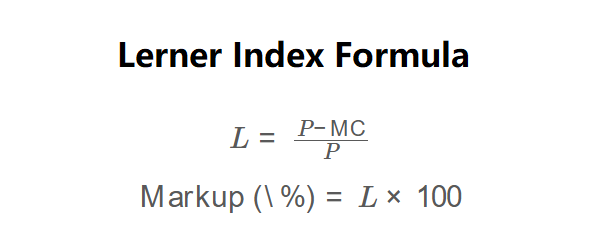 Home
Home
 Back
Back

Definition: The Lerner Index Calculator computes the Lerner Index, a measure of a firm's market power, by calculating the difference between the price of a good and its marginal cost, divided by the price. It also provides the markup over marginal cost as a percentage.
Purpose: It helps economists and businesses assess the degree of monopoly power a firm has in a market. A higher Lerner Index indicates greater market power, often associated with less competitive markets.
The calculator uses the following formulas, as shown in the image above:
\( L = \frac{P - \text{MC}}{P} \)
\( \text{Markup (\%)} = L \times 100 \)
Where:
Steps:
Calculating the Lerner Index is essential for:
Example 1: Calculate the Lerner Index and markup for a firm selling a product at $100 with a marginal cost of $60:
Example 2: Calculate the Lerner Index and markup for a firm selling a product at $50 with a marginal cost of $10:
Q: What does a high Lerner Index indicate?
A: A high Lerner Index (closer to 1) indicates significant market power, suggesting the firm can set prices well above marginal cost, often due to a lack of competition.
Q: How does the Lerner Index relate to elasticity of demand?
A: The Lerner Index is inversely related to the price elasticity of demand. In a monopoly, \( L = \frac{1}{|\text{Ed}|} \), where \( \text{Ed} \) is the elasticity of demand. A less elastic demand allows for a higher Lerner Index.
Q: Can the Lerner Index be negative?
A: No, the Lerner Index cannot be negative in practical scenarios because marginal cost should not exceed price. The calculator enforces this constraint.